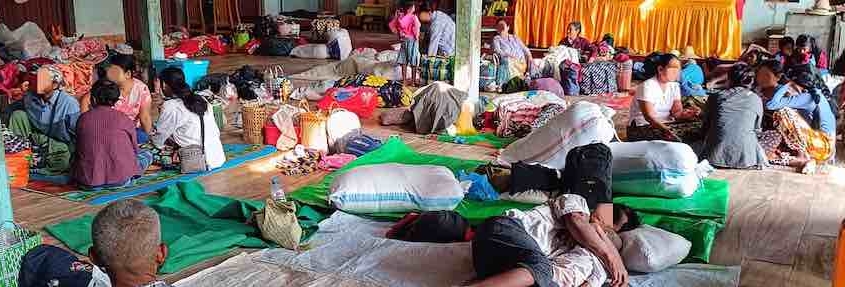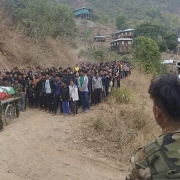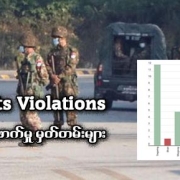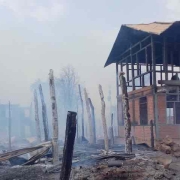Food Shortage in Sagaing Rice Basket as Myanmar Junta Raids Force 50,000 to Flee
Some 50,000 people have been displaced in Sagaing Region’s Shwebo District since Myanmar junta troops resumed deadly attacks on their villages last month, according to residents and volunteers helping displaced people.
The total number of residents displaced since the 2021 coup now exceeds 70,000 in Shwebo, where rice fields are lying fallow amid a growing food shortage.
A junta unit calling itself the Ogre Column has been raiding the district’s townships of Shwebo, Ye-U, Khin-U, Taze and Depayin since a ceasefire was agreed in neighboring Shan State in January.
Over 20,000 people displaced by junta raids between 2021 and December last year remain homeless. Over 20,000 more were displaced when junta troops raided their villages in January.
Junta forces have deployed the notorious “four cuts” strategy – designed to cut off food sources, funds, information and recruits – in the resistance hotbed of Sagaing.
On Wednesday, around 30,000 people from some 40 villages in western Taze fled when the regime called in airstrikes and infantry reinforcements, a member of the Shwebo District people’s administration told The Irrawaddy.
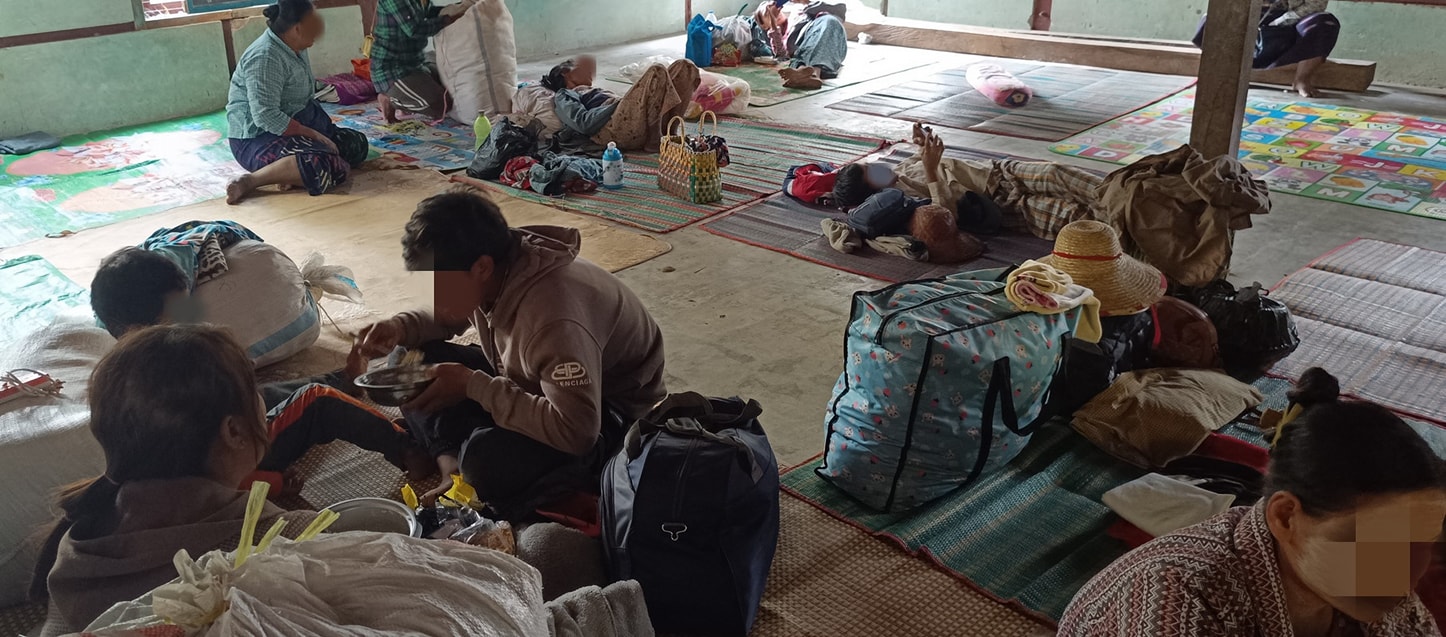
The junta onslaught came after the People’s Defense Force (PDF) seized and torched the Kan Htoo Ma village police station, between Taze and Ye-U towns, where around 30 junta soldiers and Pyu Saw Htee militias had been deployed.
Shwebo District is a rice-growing area where the country’s most popular variety, Shwebo Pawhsan, is cultivated. However, junta raids have disrupted summer paddy cultivation, sparking food shortages.
“These days, we spend more time fleeing from our homes than sleeping there. We can stay at home no more than five days in a month. And then we live in constant fear that soldiers will arrive in the village at any time. This is the time to grow summer paddy, but we can do nothing,” said a displaced villager from Ye-U Township.
Locals in Taze Township said they are unable to grow summer paddy due to the raids, adding they dare not sleep in their homes as junta troops tend to come at night.
“People flee because junta troops kill, rape, amputate and burn alive civilians during their raids,” said a member of a support group for displaced people in Depayin Township.
“And with the cold season not yet over, the cold nights mean displaced people need blankets. They also need food.”
Junta air raids in Taze Township killed a 60-year-old man and injured two travelers and a local woman on Feb. 14-15.
On Monday, junta troops backed by airstrikes clashed with local resistance fighters on the border of Taze and Ye-U, said information officer Ko Htoo Kant Zaw of the People’s Defense Comrades.
In Shwebo Township, Pyu Saw Htee militias from Myinsee village killed a three-year-old boy, a 25-year-old pregnant woman, three women aged 52, 62, 75, and a man, 62, on Feb. 15-16, according to local resistance groups.
Myinsee is one of eight junta-armed Pyu Saw Htee villages in Shwebo Township.
Ogre Column troops killed 14 civilians including a pregnant woman during raids in Ye-U, Khin-U and Depayin townships between early January and Feb. 12, according to residents. One resistance fighter was also killed in Ye-U.
The Shwebo raids involve troops from Light Infantry Battalion 708 based in Yangon Region’s Taikkyi Township, Infantry Battalion 11 based in Ayeyarwady’s Pathein Township, No. 8 Basic Military Training Depot based in Shwebo town, and pro-junta Pyu Saw Htee militias.
Shwebo District suffered fewer raids during the anti-regime Operation 1027 offensive from November to early January in northern Shan State. However, junta forces intensified their attacks on Sagaing villages after the ethnic Brotherhood Alliance agreed to a ceasefire with the regime in Shan State in mid-January.

